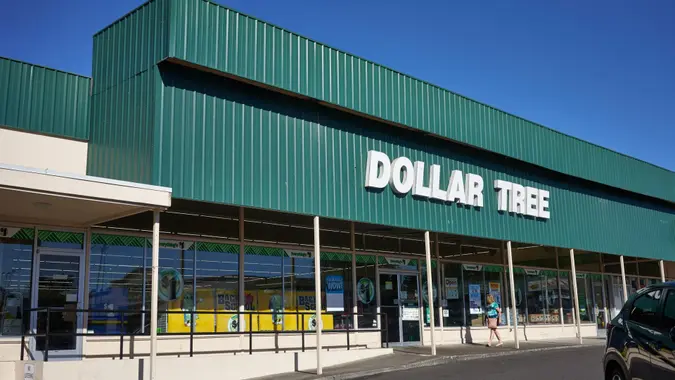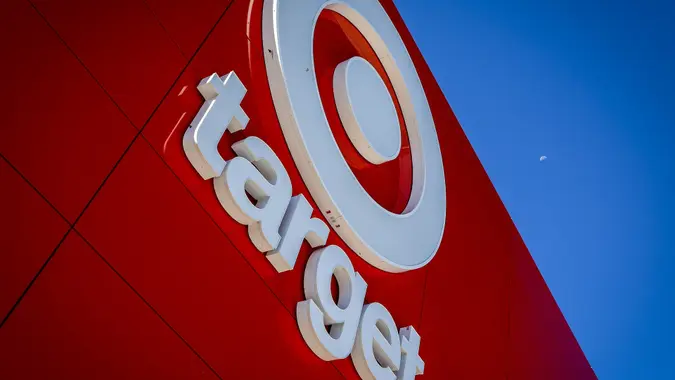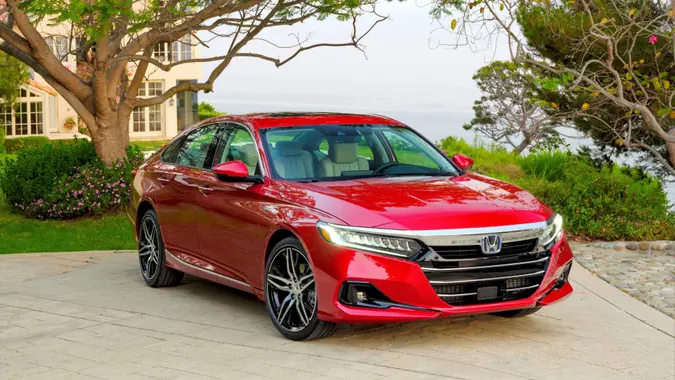8 Ways To Save on Commuting Costs in 2025

Commitment to Our Readers
GOBankingRates' editorial team is committed to bringing you unbiased reviews and information. We use data-driven methodologies to evaluate financial products and services - our reviews and ratings are not influenced by advertisers. You can read more about our editorial guidelines and our products and services review methodology.

20 Years
Helping You Live Richer

Reviewed
by Experts

Trusted by
Millions of Readers
The last couple of years saw energy prices skyrocket, leaving American consumers smarting over their energy bills, gasoline prices and related costs of commuting. The good news is that energy prices are not only dropping now but could remain on a downward trajectory over the next five years.
While this provides immediate savings in many ways, there are additional ways to carve out even more savings on your commute.
Check out these eight ways to save on your commuting costs in 2025.
Reap the Benefits of a Carpool
Just because costs are already coming down doesn’t mean you can’t save even more. The new year will be a great time to take advantage of cost-lowering strategies, such as jumping on that employee carpool or starting one with neighbors or friends. According to RideShare.org, if you carpool as much as 250 days of the year and have a commute of more than 12 miles, you could potentially save around $1,500 per year. Imagine putting that into a savings or investment account, as well, where you could earn interest on it.
Join a Warehouse Club
Another option is to join a warehouse club such as BJs or Costco. According to Lauren Fix, founder of Car Coach Reports, “The difference between the cost of regular fuel at a chain gas station and a local warehouse club in California was 45 cents a gallon. For that 15 gallon fill-up, that’s $6.75 in savings.”
If you combine that with a member’s credit card, the savings add up even faster.
Upgrade to a More Fuel-Efficient Car
If you’ve been waiting to buy a new, more fuel-efficient car, now might be a great time because you may be able to bank extra savings that could make up for the costs of buying a new car. According to the U.S. Department of Energy, a gas vehicle that gets 30 miles per gallon (MPG) saves you around $763 (in today’s gas prices) versus one that gets 20 MPG. In five years, that more fuel-efficient car will have saved you over $3,800 (not accounting for inflation).
Don’t Idle
Whether you’re waiting to pick someone up or waiting at the drive-through, turn off the engine if your wait is longer than 10 seconds, Fix recommended. “Idling drains your tank by a quarter- to a half-gallon of fuel per hour, whereas restarting only sips 10 seconds worth of gas, according to the U.S. Department of Energy.”
Even in winter, there’s no need to sit in your driveway “warming up” the engine for 20 minutes, she urged. Most manufacturers recommend driving off gently after 30 seconds.
Utilize Fuel Saving Apps
Don’t rely on your own memory of where the cheapest gas pump is; utilize apps that can help you actually find the lowest price, according to Fix. She likes GasBuddy but there are others, such as Gas Guru and Fuelio, to name a few.
Make the Leap to an Electric Car
With energy prices coming down, the rates to charge electric vehicles (EVs) are also going to be lower. As of Dec. 4, 2024, the average cost of a kilowatt hour is just 37 cents, according to AAA. If you’ve been on the fence about EV affordability, the next five years might prove to be some of the cheapest charging rates you’ll experience, and the savings could be significant compared to a gas-powered car.
Shift To an E-Bike
Even cheaper than an EV is an e-bike, if you live in conditions that allow for commuting by bike enough days of the year. A full charge on an e-bike typically costs less than 50 cents, as compared to an EV, whose charge rates for 100 miles can range from $17 to $21 and up, depending on where you live and what you drive.
Fill Up on a Wednesday
Lastly, Fix said you might find better deals on gas on a Wednesday because prices tend to rise on Thursdays in anticipation of weekend travel.
“In fact, a recent study by the St. Louis Federal Reserve found that refueling on a Tuesday or Wednesday instead of the weekend saved 8 cents to 9 cents a gallon — saving you more than $60 per year,” Fix said.
It also pays to fill up early in the day, Fix said. Station owners tend to hike prices after 9 a.m. or so, once they’ve had time to check the competition, she explained.
Even adopting just a couple of these strategies can help you significantly lower your commuting costs in 2025.
More From GOBankingRates
- Nearly 1 in 3 Americans Hit by a Costly Holiday Scam, Norton Survey Shows -- How To Avoid This
- Here's What the Average Social Security Payment Will Be in Winter 2025
- How Middle-Class Earners Are Quietly Becoming Millionaires -- and How You Can, Too
- The Easiest Way to Score $250 for Things You Already Do
 Written by
Written by  Edited by
Edited by 

























